Supernova
What a supernova?
A supernova is visible phenomenon, directly from the cataclysmic explosion of a star that leads to its destruction and thus the death of the star. This explosion is accompanied by massive increases its brightness as seen from Earth, which can last up to several weeks and even months. It is visible in daylight and at night it can be as bright as the moon and even give a shadow to objects. A supernova appears so often as a new star, hence its name, nova. Supernovae are rare events in our Milky Way, about one to three per century, against the scale of the Universe we observe every day. It was during the supernova explosion the star releases the chemical elements, it was synthesized in its existence and during the explosion itself. The shock wave from the supernova favors the formation of new stars, accelerating the contraction of regions of gas and dust in the interstellar medium. The novas, unlike supernovae come from thermonuclear explosions, causing a partial destruction of the star by expelling part of its surface into interstellar space. Our sun will not end his life as a supernova but much quieter.
The death of a star can be mild or severe, depending on its mass. Below 1.4 times the mass of the Sun, the star goes out in peace, it will pass the size of a red giant (about 50 million km radius) to that of the Earth (about 6 000 km radius). The star becomes a white dwarf. Between 1.4 and 5 times the mass of the Sun, his agony is much more violent.
Its radius shrinks to 10 km The final density is enormous, the nuclei can not resist and the heart of the star becomes a giant nucleus of neutrons. The collapse caused a terrible explosion, which will project the upper layers of the star into space and it will shine in the sky, a supernova. Above 5 times the mass of the Sun, the collapse is extremely violent. It can not be stopped. The heart of the star becomes a black hole.
The violence of the collapse produces a huge explosion, which projects the upper layers of the star into space. As in the previous case a supernova will spread, hundreds of billions of miles, seeding the interstellar medium of heavy elements produced during the life of the star during the explosion. These heavy elements are the building blocks of terrestrial planets like Earth.
This new Hubble image, is one of the most important images ever produced with an observatory in Earth orbit. It shows us a full and very detailed, the Crab Nebula. The Crab is arguably the most interesting subject, and also one of the most studied in the world of astronomy. The image of this nebula is the largest image ever taken with Hubble camera.
It was assembled from 24 individual exposures taken by the Hubble NASA / ESA Hubble Space.
Image: List of the supernovae
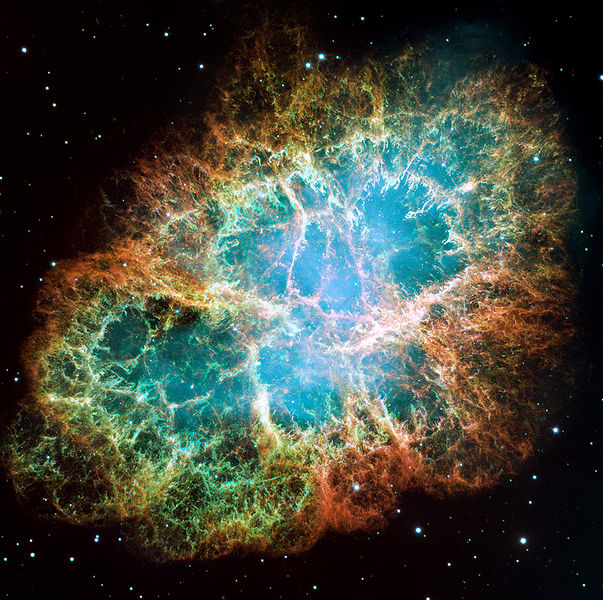
Image: The most famous supernova of the history of the astronomy. SN 1054 is a supernova the explosion of which was seen since the Earth from July 4th, 1054, called misty of the crab today which is situated in our galaxy in the constellation of the bull.
Stellar explosions in NGC 6984
Supernovae are extremely luminous explosions of stars, so bright they are remarkable among the stars shining like a spiral galaxy NGC 6984. In the picture below you can see against near the center right, a very bright star that shows the end of its life in a spectacular explosion. Already in 2012, the star named SN 2012im expelled much of its material in the middle of the spiral galaxy NGC 6984 arm. And in 2013 it was the turn of SN 2013ek another supernova explodes in this galaxy. It is it which is visible in the foreground of this picture, as a very bright star just above and right of the center of the galaxy.
SN 2012im was a Type Ic supernova, while the more recent SN 2013ek is a type Ib. They are both, supernovae resulting from the collapse of their core who have lost their outer layers of hydrogen. However, the supernova SN 2013ek type Ib lost more, its outer layers of helium. This image was taken August 19, 2013, very close to where SN 2012im exploded, so close that the two events are thought to be linked.
Two independent supernovae same class, which explode a year apart is a very unlikely event. It was initially believed that SN 2013ek was a revival of SN 2012im, but other observations showed that they were well separated, although they may be closely related by an unknown cause.
NB: Supernovae of type II, Ib and Ic are stars at the end of life. Type II supernovae have a spectrum that contains hydrogen, while Ib and Ic supernovae type are stars who have already used up their hydrogen, so it does not appear on their spectrum. Type Ic supernovae have also exhausted their helium and does not appear in the spectrum.Image: The supernova SN 2013ek that can be seen near the center right of the spiral galaxy NGC 6984 is an extremely bright star that announces the end of its life in a spectacular explosion. Image Credit: NASA / ESA / Hubble.

Articles on the same theme
1997 © Astronoo.com − Astronomy, Astrophysics, Evolution and Ecology.
"The data available on this site may be used provided that the source is duly acknowledged."
How Google uses data
Legal mentions
English Sitemap − Full Sitemap
Contact the author
 Pulsar: A Beating Stellar Heart
Pulsar: A Beating Stellar Heart  Giants of the Milky Way: Top of the Most Massive, Largest, and Brightest Stars
Giants of the Milky Way: Top of the Most Massive, Largest, and Brightest Stars  The First Minerals of Stellar Systems
The First Minerals of Stellar Systems  What is a Collapsar?
What is a Collapsar?  The life of the stars: From the collapse of the nebula to the cataclysmic explosion
The life of the stars: From the collapse of the nebula to the cataclysmic explosion  When a Star Dies: Birth of a Black Hole
When a Star Dies: Birth of a Black Hole  Neutron Stars: When Atoms No Longer Exist
Neutron Stars: When Atoms No Longer Exist  Blue Giant Stars and Red Supergiants: The Fate of Massive Stars
Blue Giant Stars and Red Supergiants: The Fate of Massive Stars 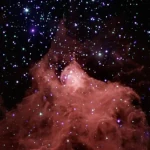 Gravitational Collapse: Formation and Birth of Stars
Gravitational Collapse: Formation and Birth of Stars  The mystery of gamma-ray bursts
The mystery of gamma-ray bursts  The white dwarfs
The white dwarfs  The brown dwarfs
The brown dwarfs  The Wind of Stars: Interaction between Light and Cosmic Dust
The Wind of Stars: Interaction between Light and Cosmic Dust  Bright Stars Sirius
Bright Stars Sirius 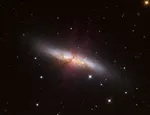 The Cigar Explosion
The Cigar Explosion  Escape velocity of small objects from black holes
Escape velocity of small objects from black holes  Gould's belt, a stellar firework
Gould's belt, a stellar firework  The death of stars as seen by hubble
The death of stars as seen by hubble  Blue, white, yellow, orange stars
Blue, white, yellow, orange stars  The Pleiades: The Seven Sisters and Hundreds of Stars
The Pleiades: The Seven Sisters and Hundreds of Stars 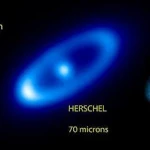 The Star Fomalhaut: The Mouth of the Fish
The Star Fomalhaut: The Mouth of the Fish  A black hole swallowing a star
A black hole swallowing a star 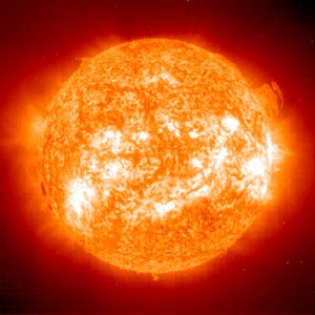 The yellow dwarfs
The yellow dwarfs  Thousands of stars bound by gravity
Thousands of stars bound by gravity  Comparative sizes of planets and stars
Comparative sizes of planets and stars  What is a Cepheid?
What is a Cepheid?  Turn off the stars to see exoplanets
Turn off the stars to see exoplanets  Betelgeuse: Giant Star on the Edge of Chaos in Orion
Betelgeuse: Giant Star on the Edge of Chaos in Orion  Bright Planets, Twinkling Stars: The Art of Recognizing Them
Bright Planets, Twinkling Stars: The Art of Recognizing Them  From the Naked Eye to the Space Telescope: What Methods Evaluate the Distance of Stars?
From the Naked Eye to the Space Telescope: What Methods Evaluate the Distance of Stars?  U Camelopardalis: The Carbon Star Losing Its Envelope
U Camelopardalis: The Carbon Star Losing Its Envelope  The red dwarfs
The red dwarfs  A gigantic black hole
A gigantic black hole  Monocerotis: The Mysterious Star of the Unicorn
Monocerotis: The Mysterious Star of the Unicorn  Stars near Alpha Centauri
Stars near Alpha Centauri  Super explosion and supernova SN 1572
Super explosion and supernova SN 1572  The Power of the Sun
The Power of the Sun 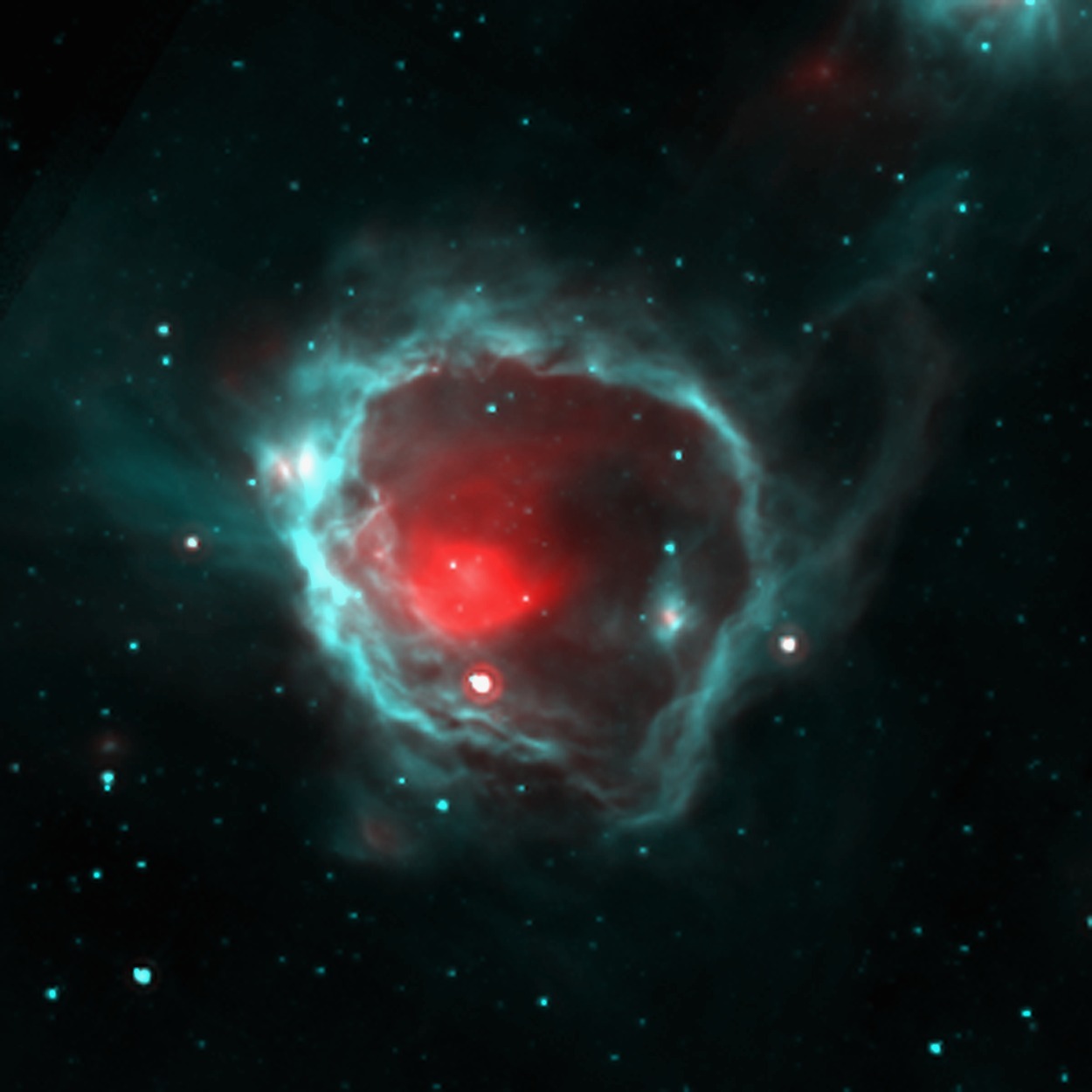 Coatlicue, the star at the origin of our Sun
Coatlicue, the star at the origin of our Sun